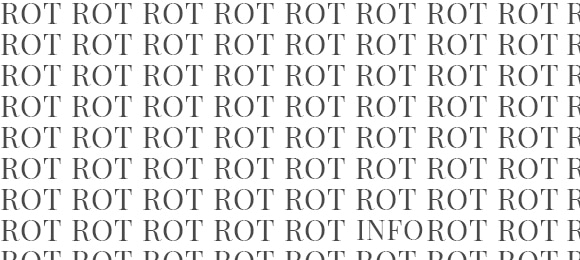Clean Up Your Web Content by Eliminating Website ROT, Part 1
What is ROT?
ROT is Redundant, Out-of-Date, or Trivial content. ROT can cost you time, money, adaptability and customer satisfaction.
Sometimes content producers forget that they’ve already posted content on a topic or that the topic is covered somewhere else on the site, so they post it again or post something similar, creating redundant information. Redundant information is also created when an organization’s online content doesn’t evolve with the organization.
Quite a bit of the content that organizations post online is trivial: it’s not important or necessary, and most users don’t care about it. This trivial content makes finding important information harder and takes time, effort, and money to maintain.
Most content put online is only relevant for a certain amount of time, such as news stories. Over time content can become out of date and clutter search results, which, like trivial content, makes finding information harder.

What’s wrong with ROT?
Regularly reviewing content to make sure it is accurate and relevant can cost huge amounts of time and money, especially if your website has lots of unnecessary and useless content, or ROT. Clutter from ROT “damag[es] findability and lower[s] customer satisfaction” (Smashing Magazine).
ROT also makes evolving a website difficult. For example, making a site responsive is theoretically as simple as updating the CSS (Cascading Style Sheets: change the look and formatting of your website) or updating the templates in your content management system. However, when you have lots of ROT, making a site responsive can be more difficult because content producers mark up content in many different ways, which makes changing the site design difficult.
Leaving ROT alone and just redesigning the core site creates a fragmented experience for users who have to deal with the different user interface, which can also decrease customer satisfaction.
Eliminating ROT
Following the steps below will help you determine criteria for necessary, relevant and timely content for your organization.
- Identify your users’ needs and wants. What do they need to know? What would they like to know? Use analytics to learn what users search for, what they click on, and how long they stay on each page.
- Identify your organization’s needs. What does your organization need to accomplish? For example, perhaps buying isn’t something most users come to your organization’s site to do, but you still need to have that function.
- What do users absolutely need? Does your organization need to supply this need? Is your organization able to supply this need? What does your organization absolutely need?
After determining criteria for ROT, you can start from scratch or work through your pre-existing ROT.
If you can start from scratch, you should. Starting from scratch is cleaner because you can just identify the most important tasks and produce or migrate and rewrite content around those.
If you can’t start from scratch, you can work through your ROT, which can help motivate people to avoid creating ROT in the future. For steps on how to work through your ROT, see Clean Up Your Web Content by Eliminating Website ROT, Part 2.
Source: Smashing Magazine